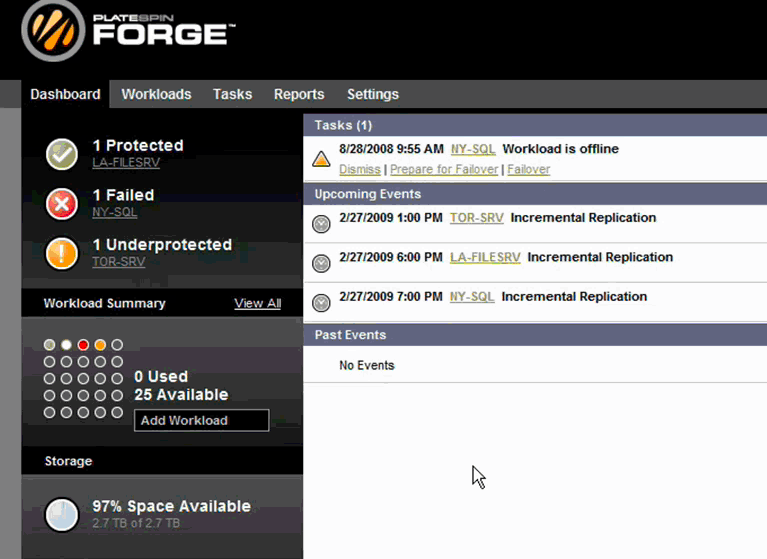Is Server Virtualization The New Clustering?
Disaster Recovery Replacements
There are actually two different ways to provide this new form of clustering. The first leverages the ability to move virtual machines across the Internet, so you can quickly get a secondary site up and running when the primary server has failed. "We have seen disaster recovery protection now available to a whole class of customers that couldn't do it before,” says Bob Williamson, an executive VP with Steeleye Technology Inc., a specialized virtualization vendor. ”In the past, you needed to buy another physical server and have it ready if the primary machine went down. But by using virtualization and hosting these servers at a remote location, enterprises can use these machines if their datacenter goes out. That lowers the entry cost for deploying wider-area disaster recovery, and opens up this protection to a whole new set of companies that haven't been able to consider it before.”
In the past couple of years, the three major virtualization vendors--Microsoft, VMware, and Citrix--each have strengthened their ability to provide more capable DR and business continuity services in their products. Citrix has purchased VMlogix, which allows for more capable automated setup and tear down of multiple machine configurations and automation tools that can be used with multiple hypervisors from all three vendors. VMware has released its vFabrik and vCloud Director products. The former combines the Spring Java development environment (which VMware manages for the open source community) for a lightweight app server and load balancing and other infrastructure needs so that you can move things between various cloud instances. The latter can be useful for managing multiple virtual machines in the creation of a virtual datacenter and set up pre-configured app services and infrastructure. And a third-party storage management add-on for Hyper-V installations from Virsto.com allows you to bring up and manage virtual storage pools more readily.
Other vendors, such as Novell, have stepped into this arena with their tools to help automate the provisioning of new virtual machines and make DR easier. Novell's Cloud Manager, for example, has automated, template-based provisioning processes that allow users to request, approve, and deploy new workloads using a single Web-based portal. And its Forge appliance makes it easier to rapidly recover workloads with one-click failover and flexible restore options.
Get Tom's Hardware's best news and in-depth reviews, straight to your inbox.
Current page: Disaster Recovery Replacements
Prev Page Virtualization: The New Computing Cluster Next Page Local ClustersDavid Strom is the former editor-in-chief at Tom's Hardware and the founding editor-in-chief of Network Computing magazine. He has written thousands of articles for dozens of technical publications and websites, and written two books on computer networking.

